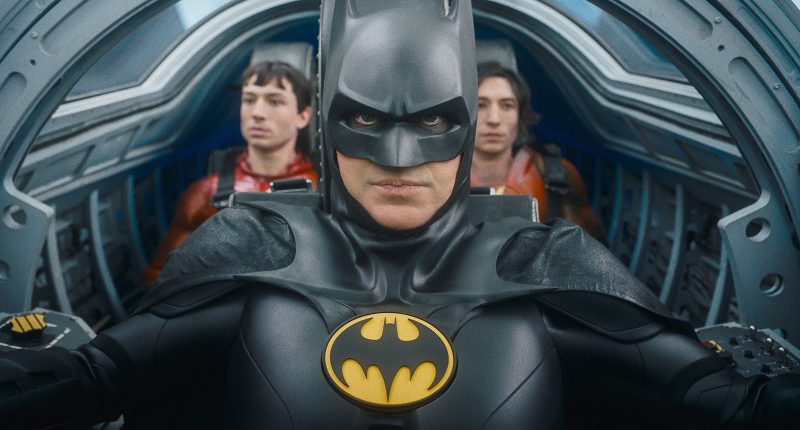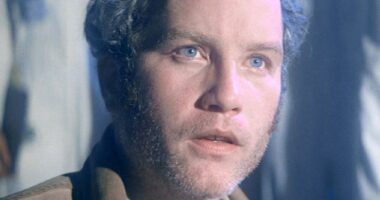Share this @internewscast.com
We may receive a commission on purchases made from links.
The DC Extended Universe spanned a decade, starting with 2013’s “Man of Steel” and concluding with 2023’s “Aquaman and the Lost Kingdom.” It featured 15 films shown in theaters, as well as the HBO Max-exclusive “Zack Snyder’s Justice League” and one TV season. While there’s no shortage of content for fans, not everything planned for the series reached the screen. In fact, the extensive production resulted in numerous high-profile scenes that were either written or filmed but never made it to theater screens.
Many of the unseen DCEU scenes are quieter, intimate moments that were trimmed for better pacing. Others reflect storylines and tones that the final film versions didn’t require. Some were elaborate, star-packed sequences and cameos cut due to factors like studio politics or changing priorities at DC. Regardless of the reasons, these intended sequences never appeared in theaters.
Clark Kent visits a pediatrician in Man of Steel
“Man of Steel” serves as Henry Cavill’s Superman origin story, featuring a fresh portrayal of Krypton’s destruction, which newborn Kal-El narrowly escapes. The movie also includes scenes where Kal-El finds his iconic supersuit and Clark Kent secures his job at the Daily Planet. However, additional material originally covered Kal-El/Clark Kent’s upbringing by Jonathan (Kevin Costner) and Martha Kent (Diane Lane). This included a deleted flashback showcasing the infant Kent’s visit to a pediatrician.
This excursion ends in disaster, as the baby’s heightened senses cause chaos in the office. Like the fully realized scene showing an adolescent Clark Kent struggling with his X-Ray vision in public school, this cut “Man of Steel” sequence would’ve illustrated the perils of growing up as a Kryptonian masking as a conventional Earthling. Per “Man of Steel” screenwriter David S. Goyer, this scene was filmed but got deleted before the feature hit theaters. The sequence stuck around in “Man of Steel” for so long, though, that it still appeared in the tie-in children’s book “Man Of Steel: Superman’s Superpowers” from Harper Collins.
Young Clark Kent learns about death in Man of Steel
One of the most controversial “Man of Steel” elements was Superman killing General Zod in the film’s finale. According to screenwriter David S. Goyer, this brutal climactic moment might’ve worked better had one early scene that he wrote made it to the screen. This flashback would have given viewers a window into Kal-El’s life growing up in the Kent household. It featured Jonathan and Clark on a hunting trip that eventually involved the latter character being forced to kill a deer, a moment that has a big impact on him.
Young Clark is shaken over having to take a life, which leads to Jonathan explaining to his son the momentousness of killing someone even when it’s deemed necessary. This scene was never actually shot despite its thematic importance. Even without this interaction making it to principal photography, it was clearly meant to tee up the eventual demise of Zod. We’ll never know if this scene would have changed the critical reception of the film’s finale, but it certainly could’ve made this grisly Superman behavior feel a little less out-of-nowhere.
Harley Quinn turns on Joker in Suicide Squad’s finale
Jared Leto’s bold new take on The Joker was a focal point of the marketing campaign for “Suicide Squad.” His vision for the character even closed out the famous “Suicide Squad” Comic-Con sneak peek from July 2015, with an ominous POV scene of him reassuring viewers he wouldn’t kill them, just hurt them “really, really bad.” Having Leto’s Joker provide a final mic-drop moment in the first piece of major marketing signified how important this classic comic book villain was to the film. In the theatrical cut, though, Leto’s Joker had a minimized presence that reeked of last-minute cuts. It turned out that a lot of Joker stuff got axed, including a scene that would’ve provided more emotional resolution to Harley Quinn’s (Margot Robbie) character arc.
One sequence that was shot but not used revolved around a burned Joker surprising Quinn and the other Suicide Squad members just before they confront The Enchantress. In the deleted scene, Joker offers Quinn safety by his side as a powerful crime boss, but she refuses so she can instead aid Deadshot, Captain Boomerang, and her other new friends. This would’ve offered The Joker a concrete ending to his “Suicide Squad” role and given Harley Quinn some much-needed autonomy in this feature. Unfortunately, the sequence, like so many Joker-centric segments, never made it into the big screen cut of “Suicide Squad.”
Slipknot’s backstory flashback in Suicide Squad
Many elements of “Suicide Squad” became go-to punchlines after the feature’s release. That was especially true of Adam Beach’s Slipknot, a character defined by his ability to climb anything. Slipknot is unceremoniously killed early on in “Suicide Squad” as a way of demonstrating how the explosive head implants given to Task Force X work. Between that and his peculiar fascinations as a character, it’s no wonder Slipknot quickly became a source of mockery for “Suicide Squad” detractors. Originally, though, Slipknot got a little more screen time via a storytelling device that other Suicide Squad members received.
As “Suicide Squad” hit theaters, writer/director David Ayer revealed that he shot a flashback scene detailing Slipknot’s crimes and backstory, much like the ones given to the other principal characters. This would have made his early demise even more shocking, as viewers would have naturally assumed that he was going to be around for the long haul. Ayer eventually cut it both for pacing reasons and because it felt superfluous to deliver so much exposition for a character who would bite the dust so promptly. This sealed Slipknot’s fate as one of the most comically underdeveloped elements in a widely criticized anti-hero boondoggle.
Arthur learns to breathe underwater in Aquaman
2018’s “Aquaman” proved to be a fantastic live-action introduction to this famous DC Comics character. Not only did audiences get to see Jason Momoa’s Arthur Curry/Aquaman duke it out with Ocean Master (Patrick Wilson) and Black Manta (Yahya Abdul-Mateen II), but the feature also evoked everything from a treasure hunting movie to a kaiju film in its runtime. Originally, the film’s tremendous scope would have also included an additional sequence exploring the childhood of Arthur Curry. This particular scene showed Curry, while facing adolescent adversity from his peers, discovering that he could breathe underwater.
While the scene was filmed, “Aquaman” director James Wan later said that the sequence proved incredibly extraneous once the film began to gel together in the editing room. It turned out it wasn’t as important to glimpse Curry’s earliest days breathing underwater as it was seeing other momentous parts of his past, such as the first day he realized he could communicate with aquatic creatures, for example. Thus, this “Aquaman” flashback got the boot. The final cut still provides lots of water-based spectacle even without this blast from the titular superhero’s past.
The reason for Rick Flag and Amanda Waller’s rivalry was cut from The Suicide Squad
Rick Flag (Joel Kinnaman) begins 2021’s “The Suicide Squad” leading a team of villains dispatched specifically so they can die and allow the “real” heroes to enter the island of Corto Maltese undetected. Flag is later shown to have survived this scheme and joins up with the film’s main characters to track down Starro and liberate the island. In the final cut, Flag’s placement on this doomed team of costumed oddballs doesn’t have any real importance. He’s just another casualty that Amanda Waller (Viola Davis) can use to her advantage. Initially, though, writer and director James Gunn cooked up a scene that revealed Waller had a massive bone to pick with Flag, thus inspiring her to place him on the team.
This deleted scene sees Flag offering up a theory on why Waller would sacrifice someone like him on this mission. We cut to a flashback where Flag crudely pokes fun at a colorful outfit Waller wore to work one day. “Looks like a gang of clowns s*** all over you,” he quips. While the nearby John Economos (Steve Agee) cackles with glee over the joke, the consistently serious Waller does not see the funny side. She shoots a severe glare at Flag, but that’s not the end of it: This moment clearly inspires her to place Flag on a mission that makes death almost certain. Though a detailed sequence (and one that shows Waller’s petty side), this bit of office banter gone wrong never made it to movie theaters.
A cut Black Adam post-credits scene teased more Doctor Fate
The sole post-credits scene in the theatrical release of “Black Adam” concerns the return of Henry Cavill’s Superman, teasing a showdown between him and Dwayne Johnson’s anti-hero. As if that wasn’t enough to change the hierarchy of power in the DC universe, there was originally a second post-credits scene teasing the return of another DC Comics character. Pierce Brosnan’s Doctor Fate was incredibly endearing in “Black Adam,” which made his sacrifice during the movie’s finale all the more disappointing to moviegoers. However, this deleted “Black Adam” post-credits scene almost changed everything about the DCEU: Someone is shown picking up Doctor Fate’s helmet.
Whether this was supposed to be Brosnan’s character or another human being taking up the character’s mantle is unclear. Still, this clearly solidified to viewers that Doctor Fate’s role in the DCEU wasn’t finished. No reason has been given for why this sequence was cut or if it even got shot. Its deletion likely occurred to ensure that nothing overshadowed the teased Black Adam versus Superman showdown. Concerns over undercutting the impact of the film’s ending — which hinges heavily on Doctor Fate’s sacrifice — may have also played a role in this end-credits scene hitting the cutting room floor. Given that DC Studios co-head James Gunn has confirmed that the world of “Black Adam” won’t be revisited in the near future, it was probably for the best that this Doctor Fate tease never made it to movie theaters.
Zack Snyder wanted the Green Lantern John Stewart in his Justice League director’s cut
Even with Zack Snyder coming back to realize his original vision with 2021’s “Zack Snyder’s Justice League,” one pivotal aspect of the feature was forced off the table by Warner Bros. executives. A big “Justice League” reveal from Snyder confirmed that he intended to conclude the movie with a meeting between Bruce Wayne and the Green Lantern John Stewart (Wayne T. Carr). This would have been the first live-action incarnation of the beloved Green Lantern, hinting at an even greater cosmic world of superheroes out there beyond what was ultimately shown in “Zack Snyder’s Justice League.” However, studio bosses stepped in to say that, even though the scene was shot, Snyder couldn’t add it to his hyped-up director’s cut due to their other plans for John Stewart.
Snyder was so frustrated over not being able to include this cameo appearance that he almost walked away from the whole “Zack Snyder’s Justice League” endeavor entirely. Eventually, though, the filmmaker relented. In the version that made it to Max, Wayne had an unexpected rendezvous with Harry Lennix’s Martian Manhunter instead. This fulfilled Snyder’s desire to conclude his “Justice League” cut with the most grounded Justice League member encountering a cosmic crime-fighter. Still, it wasn’t the original vision for the sequence, which would have brought a beloved comic book figure to live-action years before James Gunn dreamed up a “True Detective”-style Green Lantern series featuring Stewart.
The original Shazam! Fury of the Gods end-credits scene featured Hawkman and Cyclone
2019’s “Shazam!” garnered a lot of praise for its fun action sequences and light-hearted spirit, but its sequel, “Shazam! Fury of the Gods,” was besieged with all kinds of drama behind the scenes, including the initial plans for its post-credits scene getting jettisoned. After “Fury of the Gods” opened, star Zachary Levi confirmed that the mid-credits scene, which shows Jennifer Holland and Steve Agee (reprising their roles from “Peacemaker” and “The Suicide Squad,” respectively) recruiting Shazam for the Justice Society, was not the original plan. Levi revealed that “Black Adam” superheroes Hawkman and Cyclone were originally going to show up and ask Shazam to join the superhero team. Per Levi’s comments, the sequence was axed at the last minute, much to his chagrin.
“Fury of the Gods” director David F. Sandberg separately clarified that the planned scene was canned just three days before it was set to be shot. Because the sequence’s gas station set had already been built, Sandberg was determined to use it even without those “Black Adam” actors appearing. Producer Peter Safran then came up with the idea of Holland and Agee showing up as substitutes for Hawkman and Cyclone. For Sandberg, these characters serving as Justice Society recruiters didn’t really make sense, but their involvement ensured that the set and props wouldn’t go to waste, so the cameras began rolling on this overhauled mid-credits scene.
The ending of The Flash was supposed to feature different characters
Considering how messy the history of “The Flash” is, it’s perhaps not surprising that the movie failed to impress. The production was plagued by drama, and not only concerning the allegations made against lead actor Ezra Miller. It was a period of change for DC movies, which led to the original ending of the film being charged considerably. In the version that made it to movie theaters, Barry Allen returns to his original timeline after accepting that he cannot stop his mother’s death (though he makes a small tweak to ensure that his father is not incorrectly blamed for it). However, all the meddling means that Bruce Wayne is now different — instead of the Ben Affleck version, Barry is met by George Clooney’s Bruce Wayne.
What you may not know is that a few different endings were shot prior to this. The first iteration involved Michael Keaton’s version of Bruce Wayne and Supergirl (Sasha Calle), essentially reversing their earlier deaths. When Discovery acquired Warner Bros. in 2022, the execs put in temporary charge of DC films decided to add Henry Cavill’s Superman and Gal Gadot’s Wonder Woman to the ending, and a new version was shot with them alongside Supergirl and Keaton’s Batman. However, this revamped version was scrapped after James Gunn and Peter Safran took over DC Studios and put forward some radically different ideas for where live-action DC movies should go. Those ambitions didn’t include Miller’s Flash having further adventures with these versions of Superman and Wonder Woman, so hasty reshoots took place.
Two Batman cameos were filmed for Aquaman and the Lost Kingdom
Much like “The Flash,” “Aquaman and the Lost Kingdom” had a bumpy ride en route to the silver screen. As the future of DC movies radically changed during its lengthy production, aspects of the sequel needed constant tweaking, including plans for Bruce Wayne to cameo. It turns out that both Michael Keaton and Ben Affleck filmed scenes as their respective versions of Batman for “Aquaman and the Lost Kingdom,” though only one was going to be used, and that would depend on how the release schedule shaped up.
“The tricky thing early on was not knowing whether ‘Aquaman [and the Lost Kingdom’] would come out first or come out after [‘The Flash’],” director James Wan told Entertainment Weekly when asked about the situation. “So, we just had to be prepared.” Even Aquaman himself Jason Momoa admitted he had no clue which Batman was appearing in his movie. In the end, not a single version of Batman appeared in “Aquaman and the Lost Kingdom.” With no trace of either Affleck or Keaton in the film’s final cut, all this turmoil around the DC Extended Universe’s swan song was for naught.








